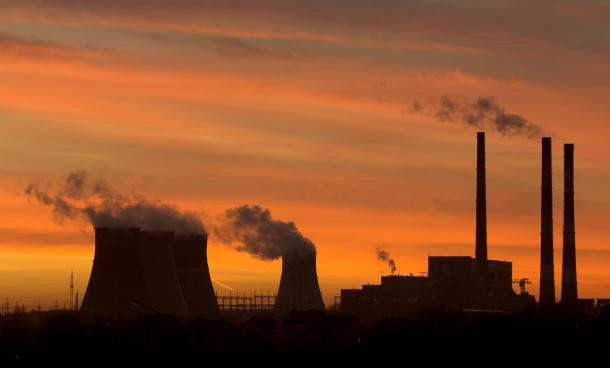
AFRICA must find ways to quantify greenhouse gas (GHG) emissions to participate in carbon markets effectively. Africa is particularly vulnerable to climate change impacts due to its high exposure and low adaptive capacity. The continent is already experiencing changes in rainfall patterns, increases in frequency and intensity of extreme weather events such as floods and droughts, and rising sea levels, affecting food security, water availability, health, and infrastructure, among others.
Moreover, Africa’s population is expected to double by 2050, increasing the demand for energy, transportation, housing, and other sectors that consume fossil fuels and generate greenhouse gas emissions. Quantifying GHG emissions is the first step towards addressing climate change and achieving sustainable development. It enables African countries to understand the sources and intensity of emissions and develop strategies and policies to reduce them cost-effectively and equitably.
It also allows them to participate in international climate negotiations and access climate finance and carbon markets, which offer opportunities for green growth and poverty reduction. By quantifying greenhouse gas emissions, Africa can contribute effectively to the global effort to limit global warming to below two degrees Celsius above pre-industrial levels, as set under the Paris Agreement.
Quantifying greenhouse gas emissions is essential for African countries to participate effectively in international climate negotiations. International climate negotiations aim to reduce global GHG emissions, mitigate climate change impacts, and promote low-carbon and sustainable development.
African countries are highly vulnerable to climate change and have historically contributed little to global greenhouse gas emissions. Quantifying emissions accurately helps African countries to make a case for differentiated responsibilities and respective capabilities in climate negotiations.
Also, African countries can determine their mitigation potential and set targets to reduce their emissions consistent with their socioeconomic development aspirations and priorities. In addition, quantifying emissions helps African countries to track their progress and evaluate the effectiveness of their mitigation policies and measures.
This information is essential for reporting to international climate bodies, such as the United Nations Framework Convention on Climate Change and to access climate finance and technology support under the carbon markets initiative.
Carbon markets enable countries to sell carbon credits representing greenhouse gas emissions reductions to countries or corporations that still need to meet their emission reduction targets.
- COP26 a washout? Don’t lose hope – here’s why
- Out & about: Bright sheds light on Vic Falls Carnival
- COP26 a washout? Don’t lose hope – here’s why
- Out & about: Bright sheds light on Vic Falls Carnival
Keep Reading
African countries can receive financial incentives for pursuing low-carbon development pathways by participating in carbon markets. They can attract investments in renewable energy, energy efficiency, and other low-carbon technologies. However, African countries must provide reliable and verifiable data on their emissions and mitigation activities to participate in carbon markets, which requires robust emissions quantification systems.
Canada uses various methods to quantify GHG emissions at both micro and macro levels. Some of the methods used are the Holos model, Life Cycle Assessment (LCA) and Carbon Footprint, only to mention a few.
Holos is a comprehensive farm model and software programme that estimates GHG emissions based on information entered for individual farms. Canadian organisations use it to track emissions from agriculture. Holos calculates GHG emissions from different sources, such as direct and indirect energy use, land use changes, cropping systems and manure management.
It also quantifies greenhouse gases, such as carbon dioxide, methane and nitrous oxide. Holos benefits include assisting with emissions reporting and tracking individual farm contributions to Canada and progress towards meeting its international climate commitments.
LCA is another method used to analyse the environmental impacts of a product, process or service over its entire life cycle, from raw material extraction to disposal. This method is used to quantify the GHG emissions that result from the entire life cycle of a product.
LCA considers emissions from different life cycle stages of a project or programme, including raw material extraction, production, transportation, and end-of-life treatment. The types of gases quantified with LCA are like those of Holos. LCA benefits include enabling organisations to reduce the GHG emissions of products, identify opportunities for improvement, and compare different products or processes over their entire life cycle.
A carbon footprint accounts for the GHG emissions associated with an individual, organisation, or product. It quantifies the GHG emissions from electricity consumption, heating, transportation, travel and waste. The types of gases quantified with a carbon footprint include carbon dioxide, methane and nitrous oxide. The benefits of carbon footprinting include raising awareness of emissions and identifying opportunities to reduce them.
The various methods used by Canada to quantify GHG emissions help to identify sector-specific emission sources, are used for measuring carbon dioxide equivalent emissions and can help to track progress towards meeting the international climate commitments and identify opportunities for reducing GHG emissions. Additionally, it can be used to compare different products or processes, raise awareness on emissions, and identify opportunities to reduce them, thereby aiding the efforts towards mitigating climate change.
Over the past year, pro-government media propaganda has published a few articles discussing the possibility of carbon markets in Zimbabwe. While the idea is applauded, notably, selling carbon credits without quantifying greenhouse gas emissions is impossible. Carbon credits offset emissions of greenhouse gases, such as carbon dioxide, by reducing or removing an equivalent amount of these emissions from the atmosphere.
Greenhouse gas emissions must be quantified first to determine the amount of carbon credits to sell. This is typically done through monitoring, reporting, and verification systems that ensure the accuracy and integrity of the emissions data.
Quantifying greenhouse gas emissions is necessary to determine the amount of carbon credits that can be sold and to ensure that the offsets are genuine and effective in reducing climate change impacts.
Initiatives such as sustainable agricultural practices, agroforestry, and afforestation have the potential to sequester carbon dioxide from the atmosphere, thereby reducing GHG emissions.
By quantifying the GHG emissions from these initiatives, African countries can measure the extent of the emissions avoided or sequestered and convert them into carbon credits. The carbon credits can then be sold on the carbon market for financial benefits.
Quantifying GHG emissions also ensures the credibility of carbon credits. Carbon credits must be verified to represent real, additional and permanent GHG emission reductions or sequestration. Verification requires accurate and transparent quantification of GHG emissions and the implementation of robust monitoring, reporting, and verification (MRV) systems. MRV systems track the GHG emissions avoided or sequestered over time and assure buyers that the carbon credits are genuine and of high quality.
According to the Climate Action Tracker, Africa is the least GHG emitter. Hence, quantifying GHG emissions in Africa is essential for generating tradable carbon credits on the carbon market. Carbon markets can provide financial incentives for implementing climate-smart initiatives that help sequester or avoid emissions and accelerate the transition to a low-carbon and climate-resilient future. Therefore, effective quantification of GHG emissions is necessary to develop a sustainable and profitable carbon market in Africa.
- Takudzwanashe Mundenga is a journalist, NSERC-CREATE Climate Smart Soils fellow, and MSc candidate in capacity development and extension at the University of Guelph, Canada. His expertise lies in climate change and soil science communications.










